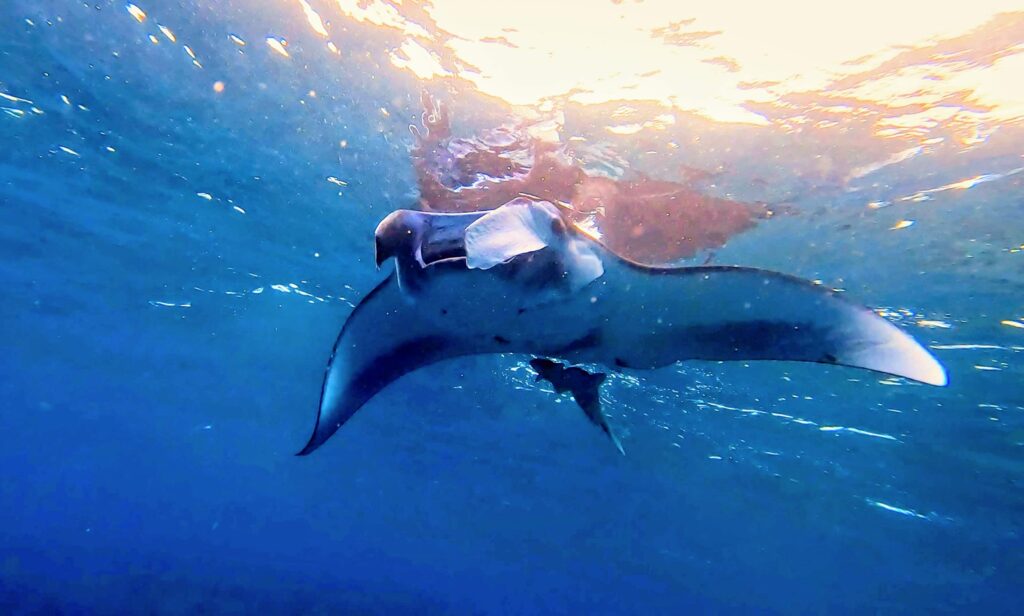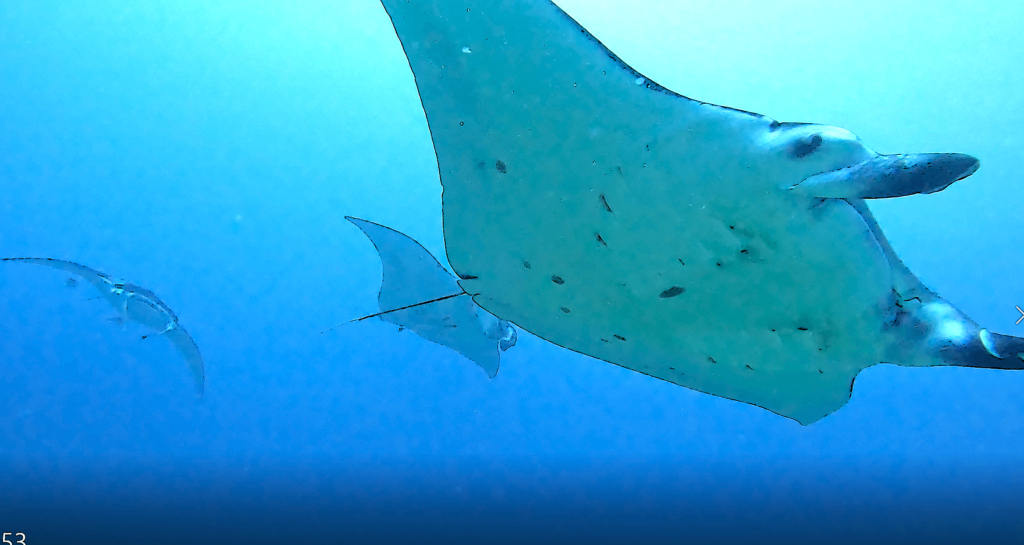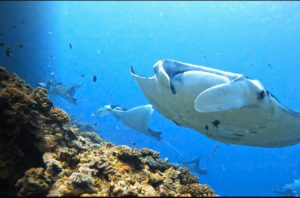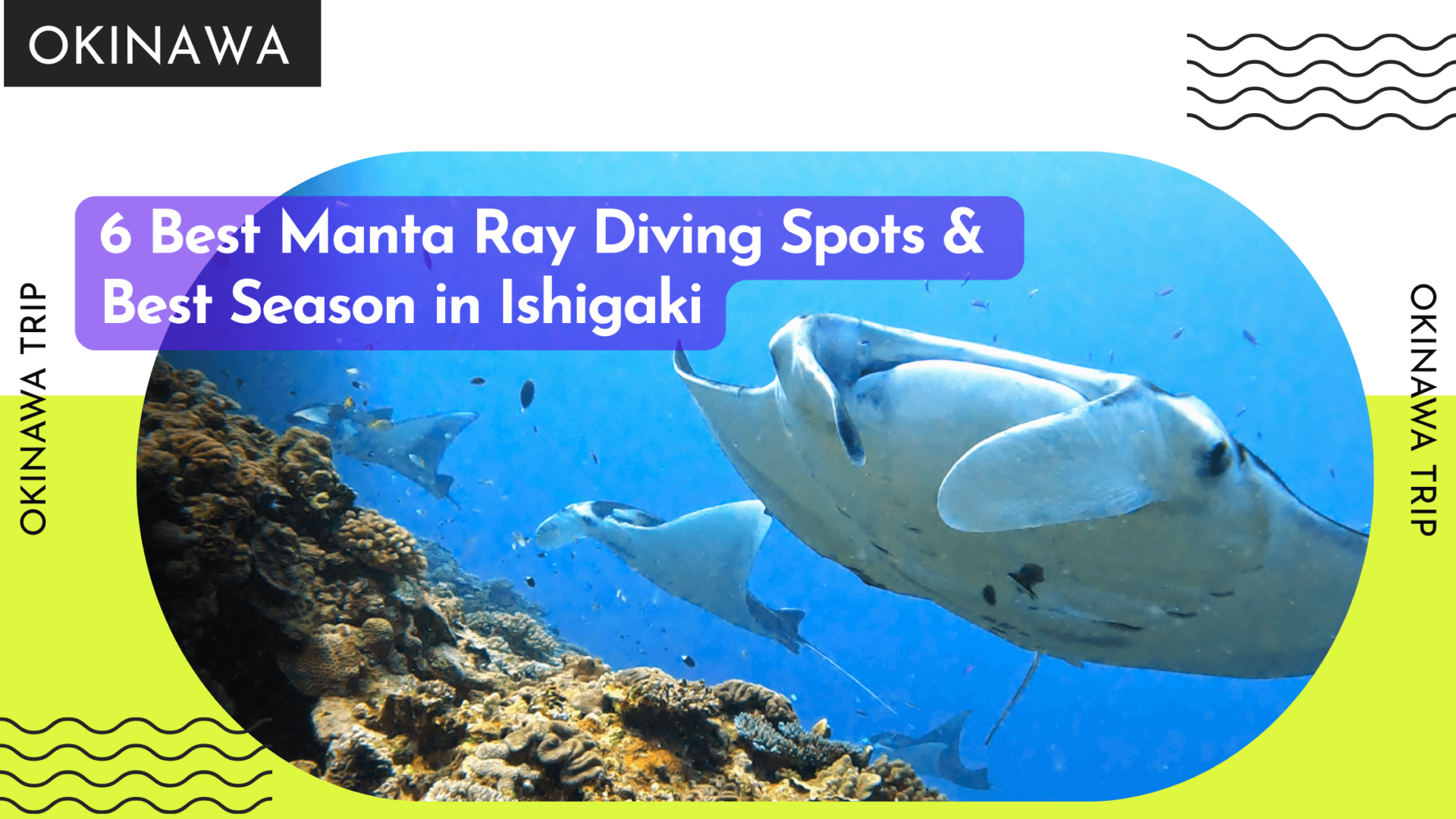Ishigaki is world-renowned for manta ray diving, but do you know the 6 top manta ray diving spots and the best season in Ishigaki? Much of the available information in English is outdated and not true. Here’s a detailed, up-to-date guide to help you maximize your chances of encountering manta rays in Ishigaki.
While manta rays can never be guaranteed (it’s nature, after all), you can significantly improve your odds by diving at the right spots during the correct seasons.
Content
6 Top Manta Ray Diving Spots Near Ishigaki
There are several prime locations around Ishigaki and the Yaeyama Islands for spotting manta rays. The Yaeyama Islands consist of eight islands: Ishigaki, Taketomi, Kohama, Kuroshima, Panari, Hatoma, Hateruma, Iriomote, and Yonaguni. While Yonaguni is a 4-hour ferry ride away, day trips from Ishigaki to the other islands are possible.
Here are the top spots for manta ray diving:
1. Yonara Channel (Best Avoided late April and May)

Located between Kohama Island and Iriomote Island, Yonara Channel is a hotspot for manta ray diving. It is particularly popular with intermediate and advanced scuba divers. While sightings aren’t guaranteed in April and May, divers often encounter manta rays throughout the rest of the year.
2. Kuroshima (December to Early April)

Kuroshima is one of the top spots for winter manta ray feeding. This makes it an excellent location for both scuba divers and snorkelers. Non-divers can easily spot manta rays near the surface, while scuba divers can experience the thrilling view of manta rays gliding above them. From December to early April, Kuroshima becomes a prime destination for viewing feeding manta rays.
3. Panari (January to April)
Close to Kuroshima, Panari also attracts manta rays in winter and early spring. Divers flock to the area known as Panari Big Corner, a manta ray cleaning station, between January and April. Though occasional feeding frenzies happen, Kuroshima generally sees more consistent feeding activity.
4. Manta City & Manta Scramble, Kabira Bay
Once the go-to spot, Manta Scramble has been overshadowed by Manta City in recent years, where encounters are more frequent having manta’s cleaning stations. Only five boats are allowed at a time, maintaining a more intimate and sustainable diving experience.
5. Nobaruzone (Early Summer to Fall)

Located close to Kabira Bay, Nobaruzone is an excellent site for manta ray encounters, particularly during the summer months. Divers visiting Ishigaki in the warmer seasons can expect a high probability of spotting these majestic creatures.
6. Kanokawa (Winter to Spring)

Kanokawa is another site favored by manta rays from winter to spring. Divers looking for quieter, less crowded dive spots during these seasons will find Kanokawa to be a hidden gem for manta encounters.
Best Season to see Manta Rays in Ishigaki
Despite the popular belief that summer is the best time to see manta rays in Ishigaki, the optimal season for manta ray diving is actually spring, from March to the beginning of April. There’s nothing quite like the experience of being surrounded by these graceful creatures during this period.
Manta Ray Courtship: Nature’s Unpredictable Spectacle in March & April
In March and April, you have the highest chance of witnessing manta ray courtship during your dive. While manta ray encounters in Ishigaki are never guaranteed, the underwater world always offers surprises. The mesmerizing courtship displays, often referred to as the manta “dance,” are most likely to occur during the spring tides of these months. The second-best time to observe this behavior is during the spring tides in October and November.
However, because the exact dates shift annually, it can be unpredictable. To increase your chances of witnessing this extraordinary spectacle, dive frequently and consider extending your stay.
Manta Ray snorkeling: The best thing about the winter in Ishigaki
If you prefer snorkeling, the best season to see manta rays near the surface is between January and March. During this period, the Kuroshima and Panari areas are prime locations for spotting numerous manta rays swimming near the water’s surface. You can expect to see more than 10 manta rays at a time, whether you’re snorkeling or diving, making for an unforgettable experience.
Find your Manta Ray tour in Ishigaki
Whether you are diving or snorkeling to see manta rays, you can choose a tour that best fit your need among the countless diving centers operating in Ishigaki. Nowadays, choosing the diving tour is easier than ever. Most diving shops have their Instagram account and can be contacted there.
Alternatively, you can find the perfect tour and make your visit to Ishigaki hassle-free with the help of a personal travel planner and an English-speaking guide. They can suggest hidden gems that most tourists overlook, saving you time on research.
Either way, be prepared for the unexpected—don’t try to control nature. Keep a relaxed schedule so you have time to explore other unique aspects of Ishigaki Island beyond manta rays.

